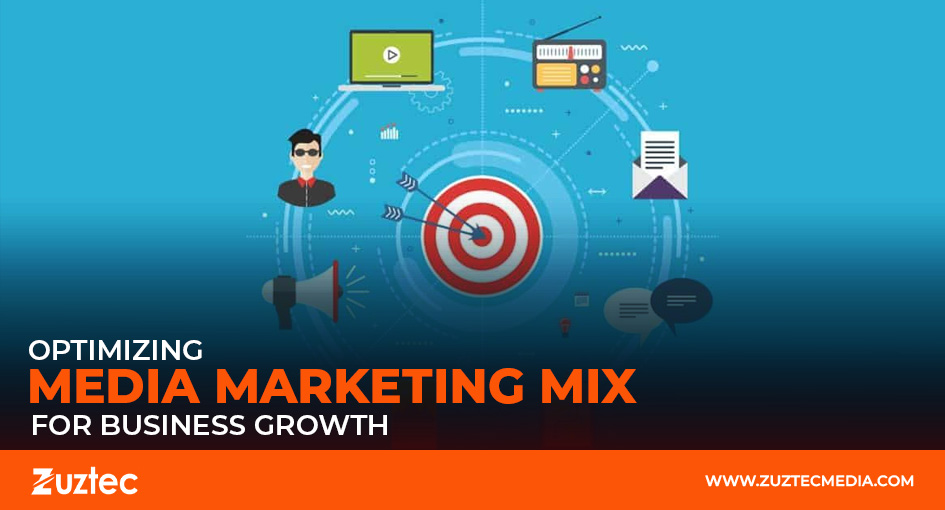
Optimizing Media Marketing Mix for Business Growth
The media marketing mix is a crucial framework for businesses looking to establish a strong brand presence, engage their audience, and drive sales. In a digital-first world, companies must go beyond traditional advertising and embrace a diverse range of marketing channels to stay competitive.
An effective mix combines owned, paid, earned and shared media to create a well-rounded strategy that maximizes exposure and credibility. By leveraging the right mix of these elements, businesses can reach their target audience more efficiently and build meaningful connections that drive long-term success.
This article explores the key components of an optimized media marketing mix and provides actionable strategies to help businesses achieve sustainable growth.
Key Components of the Media Marketing Mix
Owned Media: The Core of Brand Control
Owned media refers to all marketing assets that a business has full control over. These platforms serve as the foundation for content distribution and customer engagement.
- Company Website – Acts as the primary touchpoint for customers and should be optimized for UX and SEO.
- Business Blog – Provides valuable content that enhances authority and drives organic traffic.
- Email Campaigns – Direct communication that helps nurture leads and retain customers.
- Mobile Apps – Enhances brand accessibility and user engagement through personalized experiences.
A well-maintained owned media strategy helps businesses establish credibility and sustain customer relationships.\
Paid Media: Scaling Visibility & Targeting
Paid media allows businesses to expand their reach by leveraging advertising and sponsored promotions.
- Google Ads & Search Engine Marketing (SEM) – Targets high-intent searches to drive traffic.
- Social Media Ads – Engages users on platforms like Facebook, Instagram, and LinkedIn.
- Sponsored Influencer Content – Increases brand exposure through trusted personalities.
- Display Advertising & Retargeting – Keeps brands top-of-mind with potential customers.
Investing in a strategic paid media approach ensures faster visibility and better audience segmentation.
Earned Media: Organic Growth & Credibility
Earned media is generated through external recognition and customer-driven content, making it highly valuable.
- Press Features & PR Mentions – Increases brand credibility through news and industry articles.
- Customer Reviews & Word-of-mouth – Builds trust through positive feedback and testimonials.
- SEO & Backlinks from Authority Websites – Improves search ranking and brand authority.
- Viral & Social Media Shares – Amplifies brand reach through organic engagement.
A strong earned media presence enhances brand trust and creates long-term organic growth.
Shared Media: Strengthening Community Engagement
Shared media involves content that is distributed through collaborative efforts and audience participation.
- Social Media Engagement – Encouraging conversations and interactions with followers.
- User-Generated Content (UGC) – Customers creating content featuring the brand.
- Brand Partnerships & Co-Marketing – Collaborating with complementary businesses.
- Hashtag & Interactive Campaigns – Driving engagement through community involvement.
Businesses that prioritize shared media can cultivate brand loyalty and create deeper customer relationships.
Integrating the Media Marketing Mix for Maximum Impact
A well-integrated media marketing combines strategy, analytics, and adaptability to create a powerful brand presence. By maintaining consistent messaging, businesses can build trust and recognition while ensuring their content reaches the right audience through targeted segmentation. Data-driven insights help optimize performance, allowing marketers to refine strategies based on engagement metrics, SEO performance, and ad effectiveness. Additionally, staying ahead of industry trends ensures brands remain competitive in a rapidly evolving digital landscape.
Creating a Balanced Media Strategy
To maximize impact, businesses should align all elements of media marketing to create a seamless customer journey.
- Uniform messaging across all platforms to strengthen brand identity.
- Targeted audience segmentation to ensure relevant content delivery.
- Diversification of media types to optimize reach and engagement.
Leveraging Analytics for Performance Optimization
Tracking key performance metrics ensures continuous improvement and effective media allocation.
- SEO & Traffic Analysis – Measuring organic reach and keyword performance.
- Ad Performance Metrics – Tracking click-through rates (CTR) and conversion rates.
- Engagement Analytics – Understanding audience interaction and response.
Adapting to Industry Trends
With evolving digital trends, businesses must remain agile and integrate new media formats like:
- AI-driven personalization for content recommendations.
- Short-form video content on platforms like TikTok and YouTube Shorts.
- Augmented reality (AR) experiences for interactive brand engagement.
To sum it all up, a well-structured media marketing mix is essential for businesses aiming to expand their reach, engage their audience, and drive long-term growth. By effectively balancing owned, paid, earned, and shared media, brands can create a sustainable and scalable marketing strategy that enhances visibility and strengthens customer relationships.
Businesses that embrace data-driven decision-making, consistent messaging, and adaptability to emerging trends will maintain a competitive edge in the digital marketplace. An optimized media marketing mix ensures that brands not only attract new customers but also build lasting loyalty and credibility.
By strategically integrating these elements, businesses can maximize their marketing ROI and establish a stronger digital presence in an ever-evolving industry.

